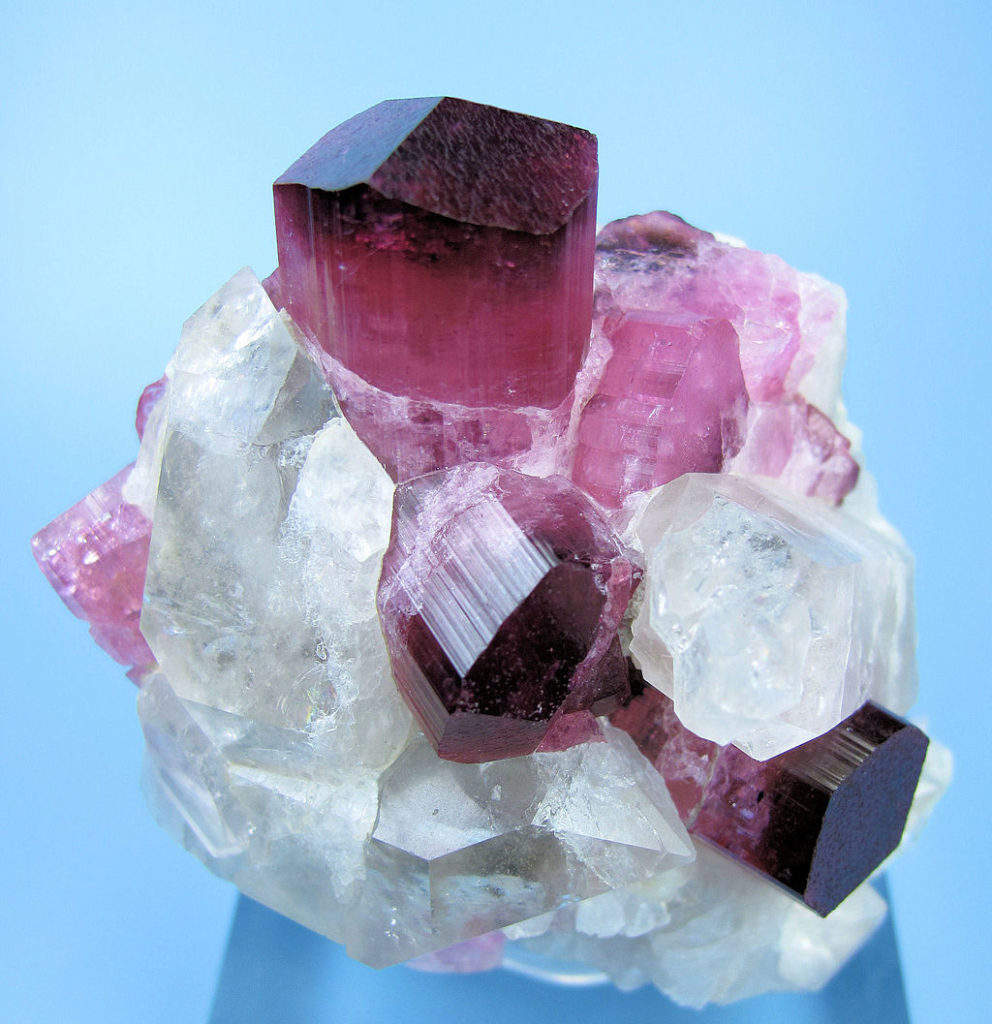Different varieties of elbaite have different alleged metaphysical properties. Pink elbaite (rubellite) is said to help feelings of anxiety and provide inspiration, green elbaite assists with sensitivity and compassion. It also helps humans connect with plant and earth energies on a high level.

Elbaite, chemically is Na(Li1.5Al1.5)Al6Si6O18(BO3)3(OH)3OH, a very chemically complex mineral containing sodium, lithium, aluminum, silicon, boron, oxygen and hydrogen. It is a member of the tourmaline group. The name tourmaline comes from the Sinhalese word “Thuramali,” meaning colored stone. The pronunciation of the word changed to tourmaline by the linguistic mangling of European traders from the Dutch East India company that imported stones of multicolored tourmaline, likely mostly elbaite and dravite from Sri Lanka in the 17th and 18th centuries. The tourmaline group minerals, including elbaite are fondly known as the “garbage pail minerals” by geologists because they act as a sink for many incompatible lithophile elements (lithium, boron, fluorine) that cannot fit in the crystal structures of most rock forming minerals. Tourmaline, especially elbaite isn’t garbage at all in the eyes of gemologists, jewelrymakers, and mineral collectors who value the mineral for its diverse, vivid coloration, high luster, and hardness. Elbaite can be faceted into beautiful gemstones or wirewrapped- both are appropriate for the mineral considering its high hardness of 7 1/2 on Moh’s hardness scale. It is harder than quartz but softer than topaz.
Elbaite crystallizes in the trigonal system and has a space group of R3M. Tourmaline is a hemimorphic mineral, meaning the structure changes along the c-axis so the top and bottom termination of a crystal can have completely different faces. Look closely at the top and bottom of a doubly terminated elbaite, or any other kind of tourmaline such as schorl or dravite and you will usually see that both terminations have different structures. This unique property is very rare in the mineral world and only is found in a few other minerals, three other well known examples being hemimorphite, zincite, and wurzite. It is this interesting property of hemimorphism and asymmetric structure that makes tourmaline crystals piezoelectric, meaning they produce an electric potential when struck with force.
Elbaite crystals are colorless if completely chemically pure, but are usually brightly colored. Iron impurities color elbaite green and blue while manganese impurities color elbaite pink and red. Pink and red elbaite crystals showing high color saturation usually have been exposed to elevated levels of natural geological radiation when they are forming deep in the earth. This radiation is caused by decay of potassium-40 and oxidizes the manganese from Mn(II) to Mn(III) which increases the color saturation. This exposure to radiation does not make the crystals dangerous in any way. Elbaite can be artificially treated or enhanced after collecting. The most common treatment is irradiation, which deepens the color similar to how it happens naturally. Irradiation in elbaite stones is usually impossible to detect. elbaite can also be heat treated to enhance color. Clarity enhancement of rarer elbaite such as Paraiba tourmaline seriously detracts their value. Never buy any artificially treated gemstone.
